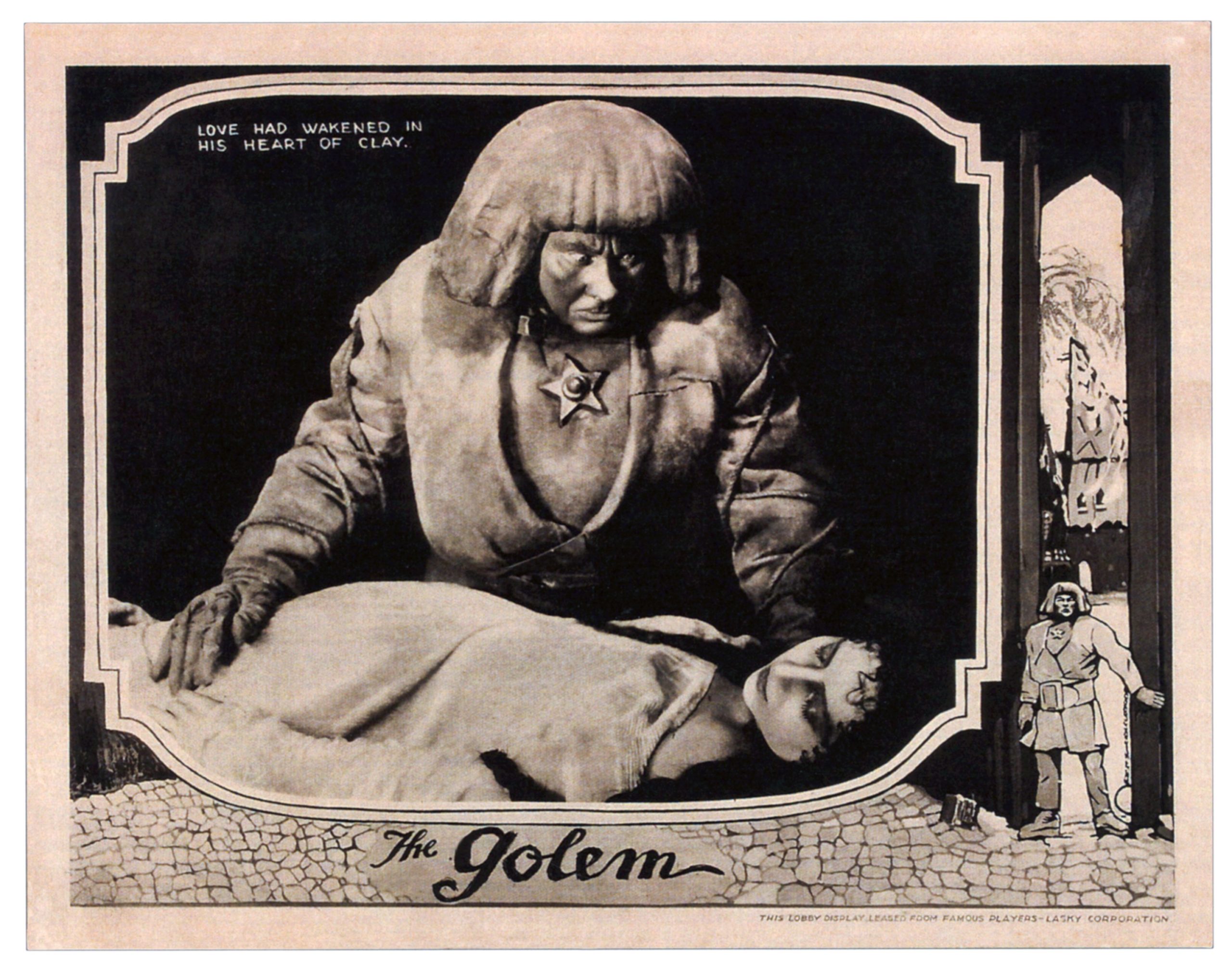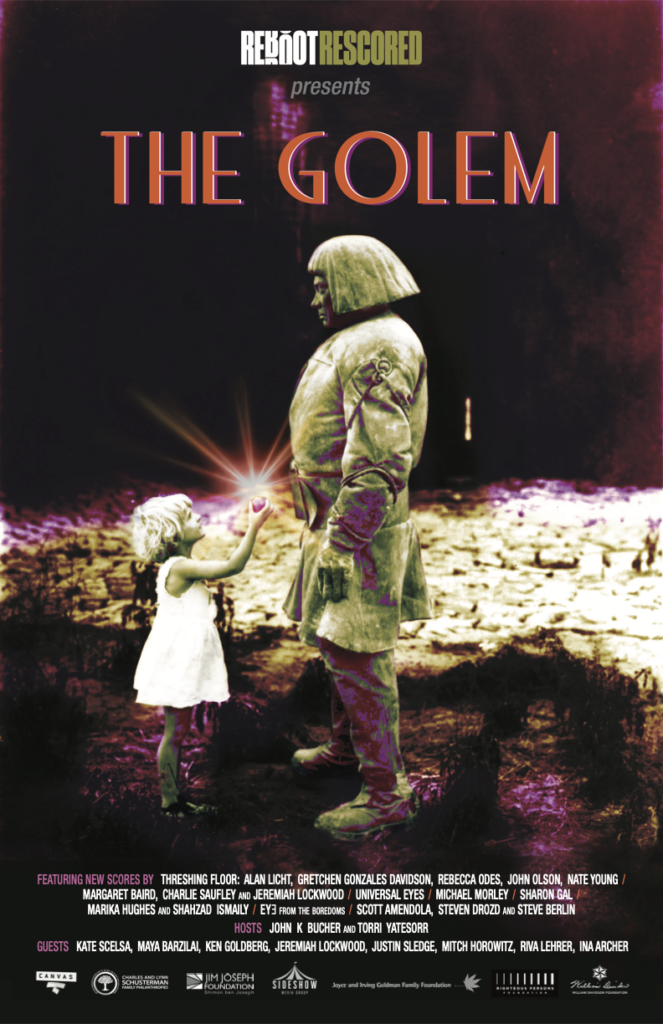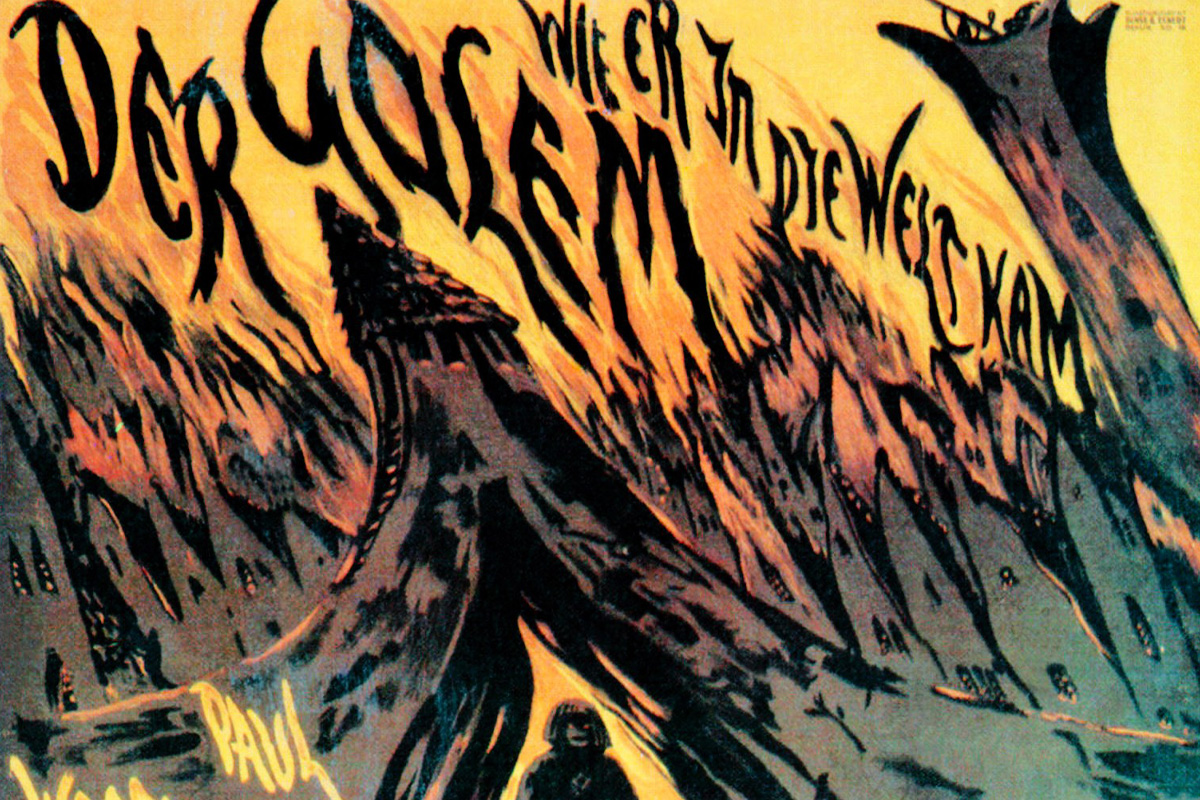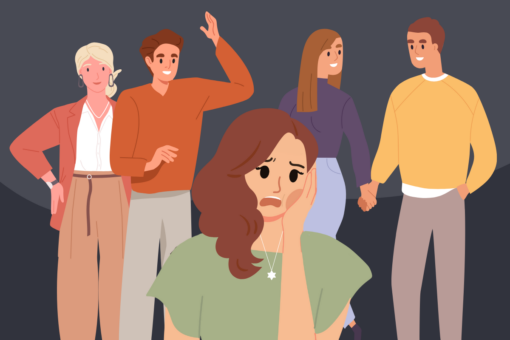It’s scary movie season, a time of year that holds particular appeal for film lovers, horror fans and the Jewish mythology-obsessed. But you don’t have to be any of the above to have been touched by one of the most iconic horror films of all time, 1931’s “Frankenstein” (“It’s alive! It’s alive!”). What is far less well known is the Jewish inspiration for the famous film: an even older classic, the 1920 German Expressionist silent film “The Golem.”
“The Golem” (or “Der Golem”), directed by Paul Wegener and Carl Boese, is set in medieval Prague in a Jewish ghetto. It features the golem, a Jewish folklore creature made of mud that comes to life. The film is an early example of the man-made monster genre and was a predecessor to the wildly influential “Frankenstein” film that came out a decade later, directed by James Whale and starring Boris Karloff. “Frankenstein,” which has been counted as one of the 100 best American films of all time, has spawned many sequels and spinoffs, including the 1974 Mel Brooks comedy horror classic “Young Frankenstein” (which is deserving of an Alma article in its own right.)

The two old horror films have much in common: Each of them is about a genius (depicted by a rabbi in “The Golem” and a scientist in “Frankenstein”) and his assistant as they bring an inanimate creature to life. And each of these stories devolves into horror when the creature proves difficult for its creators to control.
David Katznelson, the CEO of Reboot, a Jewish arts and culture nonprofit, is a huge horror movie fan. In celebration of the 100th anniversary of the theatrical release of “The Golem,” Reboot has collaborated with musicians from all over the world to create The Golem Rescored, a project that brings a new musical score to this influential Jewish occult horror film.
“There is some stuff in there that was used for future horror movies for ages,” Katznelson told Alma. “This idea of bringing something to life, of creating something you think is going to save you and then works against you… It’s a theme that runs through many horror movies.”
In “The Golem,” the creature is animated by a rabbi and his assistant in the hopes that it will protect the Jewish community that the Emperor has just ordered to leave the city. The rabbi orchestrates a dramatic conjuring ceremony. The assistant watches fearfully as the rabbi wields his wand around him and smoke gathers. He waves a star overhead as smoke and fire overwhelm the room and reveal the fateful magic word, “aemaeth” (as in “emet,” God’s truth) that has the power to bring life. The rabbi writes down the word and places it inside a star amulet that he affixes to the golem, a large clay creature that looks like a cross between a mummy and Fezzik from “The Princess Bride.” The creature then suddenly comes to life, opening his eyes and peering around the room, as the rabbi and his assistant watch with fearful awe.
In “Frankenstein,” the scene of the creature coming to life is similarly dramatic. In this film, the scientist Henry Frankenstein also uses the elements to animate his man-made monster composed of human body parts, though his means are scientific rather than spiritual. They lift the monster on a stretcher towards the sky as a flurry of lightning jolts the creature, the electric current bringing it to life (cue the famous line). Unlike in “The Golem,” the impulse to create a monster comes from a Mad Scientist’s curiosity rather than the need for a superhuman bodyguard to protect the Jewish people (in the source material, the 1818 Mary Shelley novel, Frankenstein’s obsession with reanimating dead bodies is born from grief after his mother’s death. Psychology, Jewish persecution… so many reasons to create a monster!)
The creation scene from “The Golem” has inspired more films than just “Frankenstein.” “When the Golem is created, the imagery used there is used in a lot of the monster movies,” said Katznelson, describing “the smoke imagery and the evil masks and these stone faces that look like they’re from another time.”
But “The Golem” had a particularly strong influence on “Frankenstein.” For example, both films feature a pivotal scene between the creature and a little girl. In “Frankenstein,” the misunderstood creature is running through the hills and comes across a little girl playing. The child throws a flower into the lake, and Frankenstein tries to play along, throwing the girl into the lake too, mistakenly killing her. A parallel moment occurs toward the end of “The Golem,” when the creature comes upon a little girl in a crucial scene. (Their interaction ends quite differently, but I won’t spoil it here.) The scenes are reminiscent of each other, showing just how influential the imagery and storytelling of “The Golem” was to the later horror favorite.

Now, a century after “The Golem” hit theaters, Reboot is revamping the film by cutting it into episodes and giving each section its own distinct score. (Reboot previously rescored “The Ten Commandments,” another classic Jewish film.) They chose “The Golem” because of the film’s “deep reverberation in the horror movie world. You can see its influence on so much,” Katznelson explained.
He also spoke of the broader goals of the project and the desire “to create new soundtracks for Jewish experiences. How can we apply new sounds to these films so that when a new audience watches them, they feel it in a different way? The composers are from around the world, New Zealand, Pakistan, Israel, Japan… And they’re all offering their interpretations of what the score would be in this modern era.” The new scores are wildly different from each other, some quite experimental. There’s a mystical and meditative soundtrack (by Michael Morley) in the scene of the Golem coming to life in Part 4, and a frenetic, electronic score (by ∈Y∋ ) as the drama heats up in Part 7. While the original version offers classic orchestral silent film fare, The Golem Rescored brings the film into the territory of edgy, contemporary, experimental films – but with a decidedly Jewish spin.
The Golem Rescored is available on Reboot starting October 28. The original film “The Golem” is available in its entirety on the film’s Wikipedia page.



